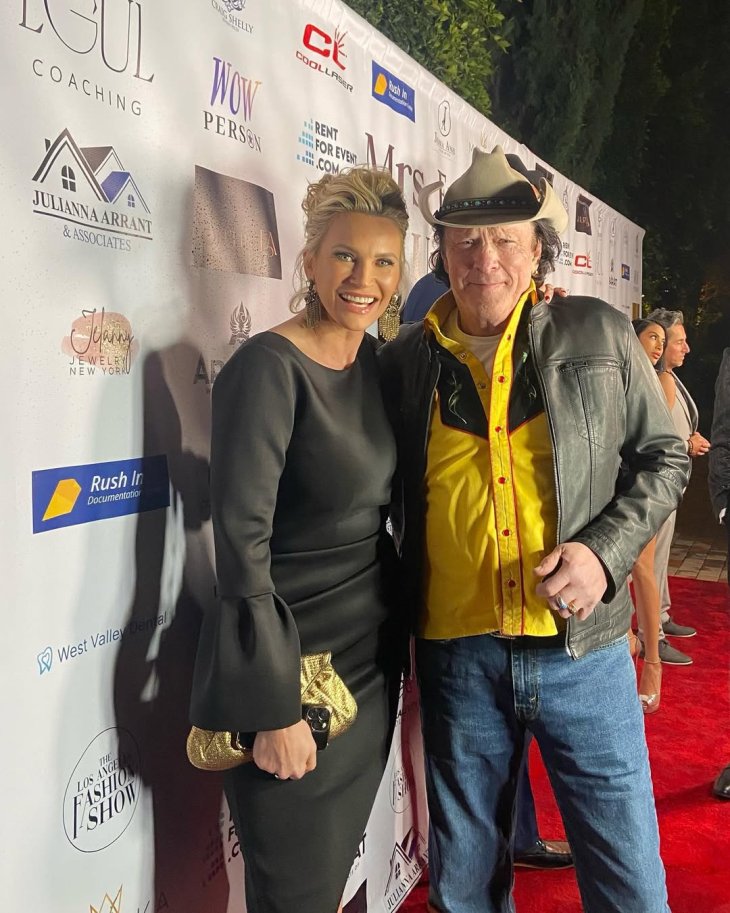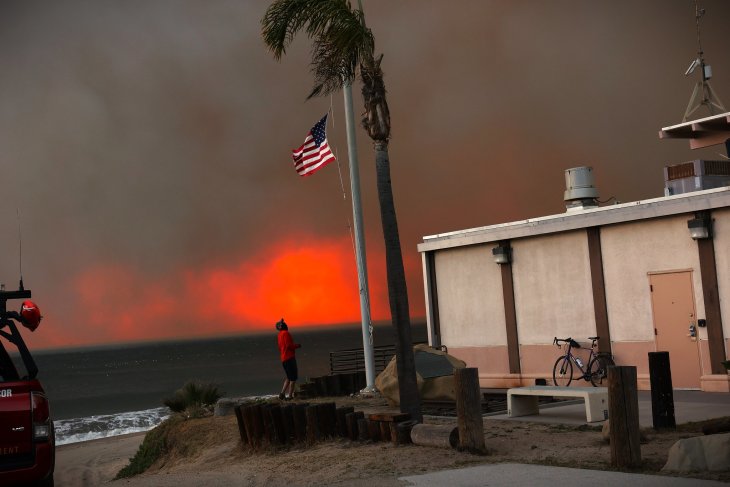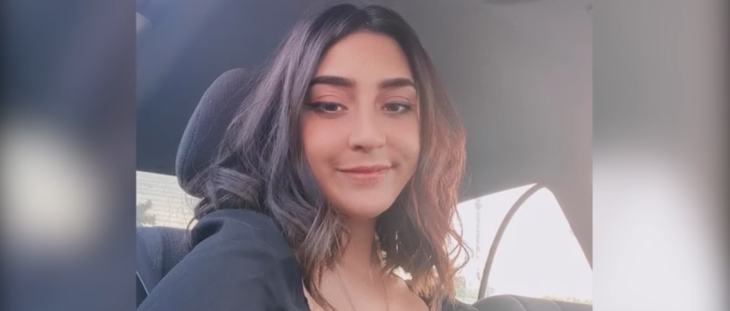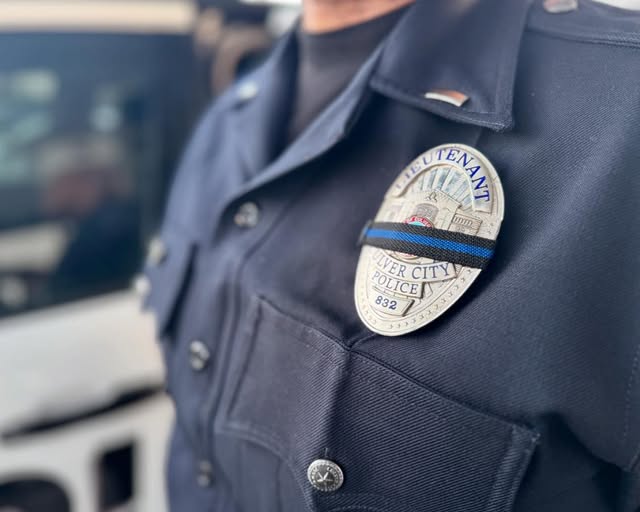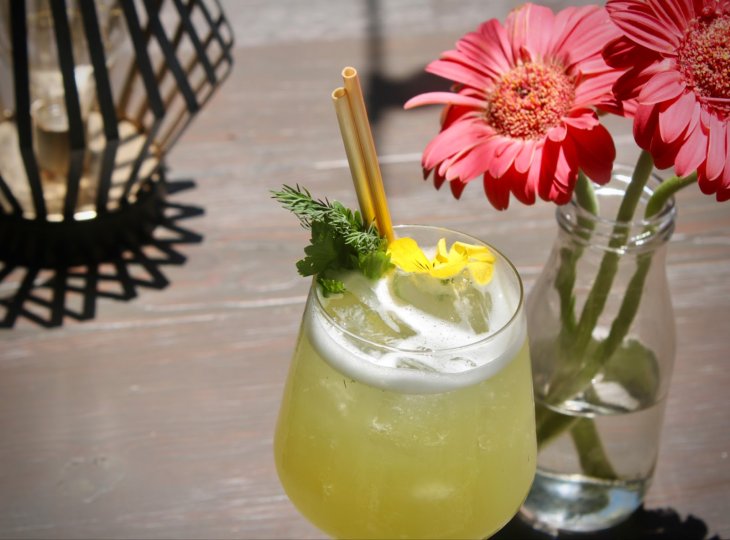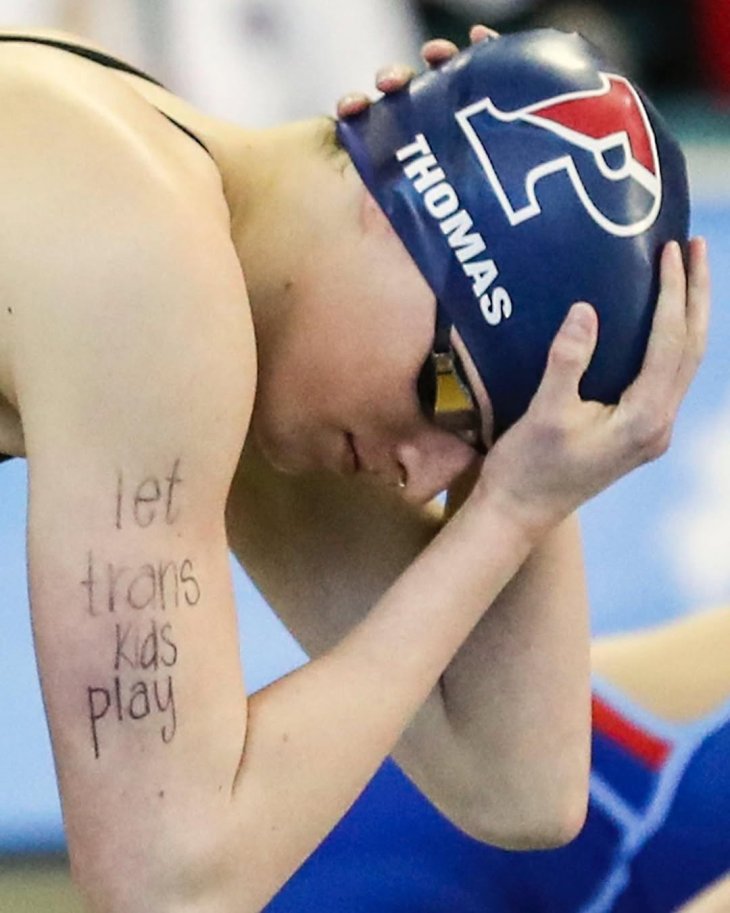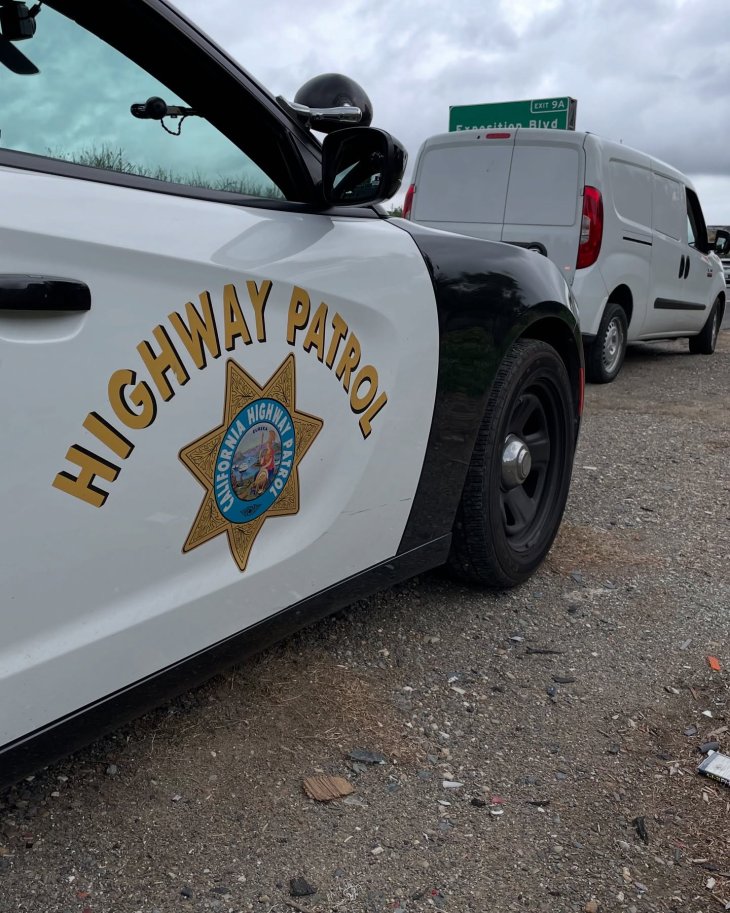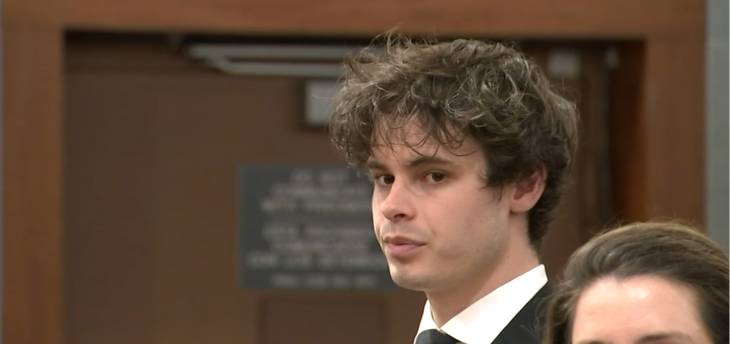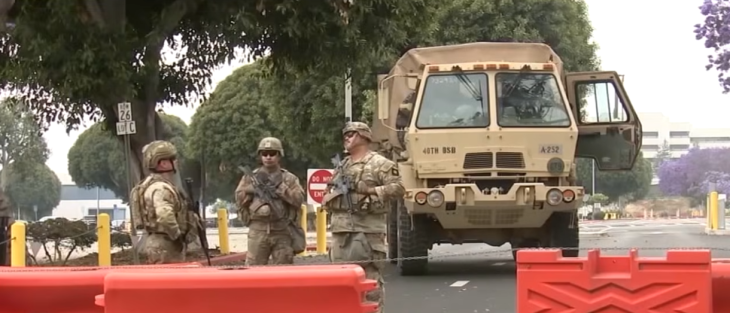“It’s A Wonderful Knife”: Crafting a Queer-Inclusive Christmas Horror Film
By Dolores Quintana
“It’s a Wonderful Knife” is a Christmas horror movie that is not just queer-inclusive but is populated by a lot of queer characters who are at the center of the narrative. As you might guess from the name, it is an LGBTQ+ interpretation of the classic Christmas movie with a slasher twist. Written by Michael Kennedy, who also wrote the horror hit, “Freaky.” and directed by Tyler MacIntyre (Tragedy Girls, V/H/S 99), it is a heartwarming and screamingly funny take on identity and love.
RLJE Films and Shudder will release “It’s a Wonderful Knife” only in theaters on November 10. It will steam on Shudder on AMC+, and everywhere you rent movies at a later date. It stars Justin Long (“Barbarian”), Joel McHale (“Community”), Jane Widdop (“Yellowjackets”), Katharine Isabelle (“Ginger Snaps”), Jess McLeod (“One of Us is Lying”), and Cassandra Naud (“Influencer”). It is equal amounts of sweet and scary. The Angel will be your new favorite horror villain, I promise.
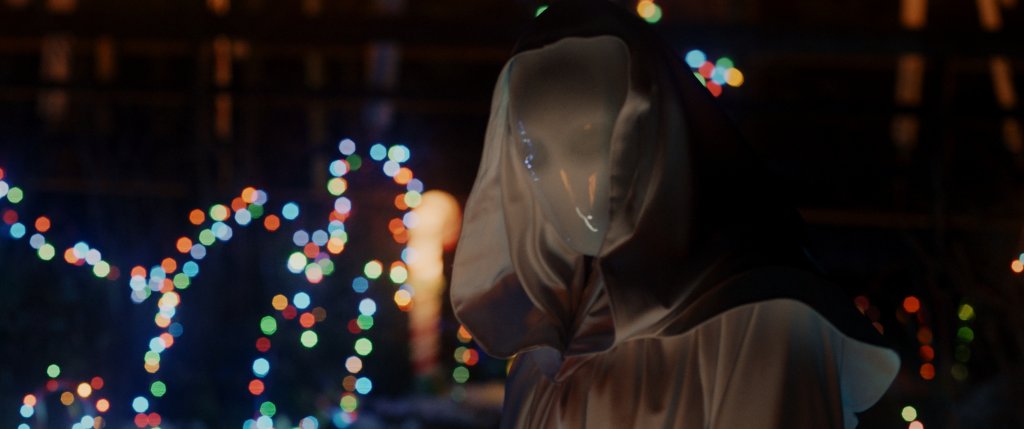
I spoke with Michael Kennedy about the idea that started it all, queer representation in films and what goes into becoming the queer person that you deserve to be.
Dolores Quintana: What was the genesis of the project? What gave you the idea for “It’s A Wonderful Knife”?
Michael Kennedy: You know, I loved “Freaky” so much. Not just the movie but everything about it. Working with Christopher Landon on the script and being on set every day, he runs such an amazing set. It was so much fun. The cast had a ball. I mean, I remember a couple of the cast people cried when the shoot was over because they were sad to leave. It was a really tight-knit shoot, and it showed in the movie. So I knew after that I wanted to write a Christmas horror movie, and I started thinking about “Freaky,” and I was sad. I missed making that movie. It was out in the world, which is great, but I just kind of missed what was going on, you know?
So when I sat down to write a Christmas horror movie, I thought, Why don’t I try to give myself a challenge and maybe try to give it the same type of treatment that we gave “Freaky”? I started thinking about what that would look like, and “It’s A Wonderful Life” came into my head right away. It was a family staple and still is every Christmas, and my dad passed away in 2018. So he didn’t get to see “Freaky,” and “It’s A Wonderful Life” is his favorite movie. I thought it would be a nice, cool, fun way to honor him but also get to weirdly hang out with my dad in a way and make something for him.
You know, when he died, I don’t want to say we had a bad relationship. But after I came out of the closet, it was just never the same. So there were a lot of regrets around his death of not saying stuff that I probably should have said or even just, I used to get mad about how he didn’t want to talk about it and that kind of stuff. But I never brought it up, either. So I started having regret, and I thought it was a nice kind of way to come to terms with everything and be okay with everything. So, weirdly, that’s how this weird movie started. When I started thinking about the movie, the original, it was so dark and weird and crazy, and I thought this would make a really good slasher movie.
Dolores Quintana: You’re right. It is very dark and not what people traditionally think of as a Christmas movie.
Michael Kennedy: It’s dark, especially for the time, you know, it’s a dark movie.
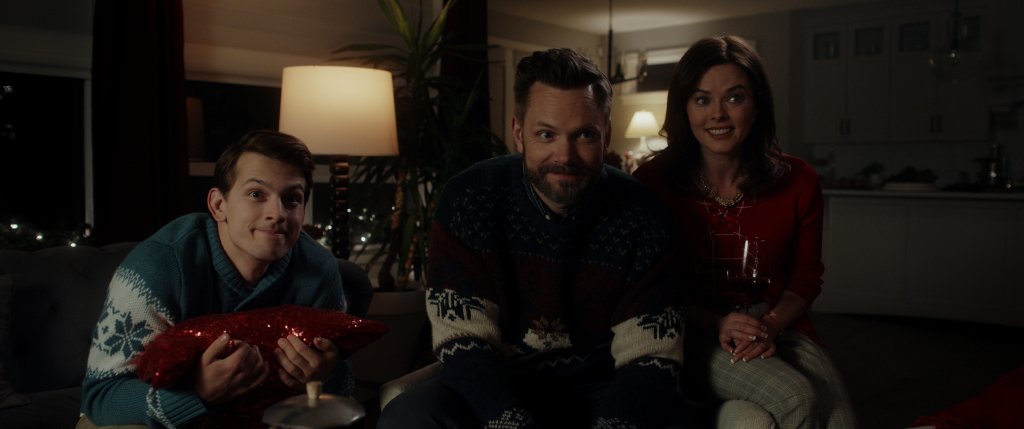
Dolores Quintana: It really attacks the idea of who you are as a person, and that thing about who you are, what you know about who you are, and what everybody else thinks of you. Which works perfectly with the subject matter that you use in “It’s a Wonderful Knife,” so it’s perfect.
Michael Kennedy: It fits really well. I mean, a lot of teenage movies are about identity anyway, so it really went hand in hand with not only Winnie figuring out who she is as a person but also, that’s what “It’s a Wonderful Life” is and what “It’s A Wonderful Knife” is about. Who am I, and what am I to people? It’s just a really interesting way to explore who you are, and 17 is such a rough time for a lot of people, I think, and for me, I remember thinking about being 17 and then going off to college. I always thought it was strange that I was supposed to figure out what I wanted to do for the next 60 years as a teenager. So, all my movies have that emotional current in them, and that’s because I also think it just makes them better. But it’s also let’s study who these people are and see what makes them tick.
Dolores Quintana: I think it’s part of the path that the character takes. I think it’s really relevant to people’s struggles. I think it’s relatable because everyone’s trying to figure out who they are.
Michael Kennedy: And it’s not just 17
Dolores Quintana: But I think it’s particularly relevant for LGBTQ people.
Michael Kennedy: For sure
Dolores Quintana: there’s this schism before they come out and even afterward. I think, okay, I know who I am, or I’m trying to figure out who I am, and these are people and their perceptions of me. I think it’s a big part of owning who you are as a person, no matter who you are, and you understand that people have thoughts about you, but you’re strong enough to say, Okay, that’s great that you thought that, but this is who I am.
Michael Kennedy: It’s just about being okay with yourself. Finally. That’s what it is mainly for me anyway. My coming out experience was coming to terms with who I was and being okay with myself. But there’s so many layers to coming out of the closet and being a queer person. So, for me, I feel like I’m doing my work a disservice if I don’t discuss it in some way or another because it’s a reflection of my life, and that’s what my life was.
So my movie should be for me; it’s my movie, so it should be the same way, and I also am allowed to do that. If it’s not me, then who? You know, that’s kind of how I feel. And in “Knife,” everyone’s gay. It started out as “Well, can I do that?” and I thought, “Well, yeah, I can do it.” Why not? I became a producer on the movie, too. So then it was even more confidence and just creating this really queer story, and the other producers on the movie, none of them are queer besides me. I remember Adam Hendricks, who’s a producer on the movie. He calls me, he’s a straight white guy, and he says, “Hey, can you make Gail gay too?” And I said, “Okay!”
It was always such a great support system and no pushback, and on this one, it was like, “Give us more!” “Freaky” was the same way. We got no pushback. It made Chris and I feel so confident in our work. I don’t think I’ll ever make a movie where there isn’t some queer element to it because that’s part of me. I feel like I should be allowed to reflect myself. So we’ve already been getting a little bit of review bombs on Letterbox’d for this movie because it’s too gay. I’m thinking, well, then f*ck you. It’s not for you. Don’t watch it. I don’t care. Thanks for paying the money.

Dolores Quintana: You already bought it. Sorry!
Michael Kennedy: Yeah, you already bought the ticket. There’s power in that, and I love this movie, too. It’s not the whole thing either, which is a powerful thing. I was thinking back on the movie today. I have this typical football player jock, but he’s gay. Then I have the confident aunt who’s gay, and then I have her confident wife whose parents call them roommates. Then we have Jimmy’s mom, who’s overly positive about it and gives them a rainbow ornament. There’s not just representation, but there are different kinds of representations and different kinds of representations of people at different paths in their own identity, which is fun and unique. I don’t think you’ve seen that much in the horror space, especially people at different stages of their process of being an out and proud person, which I think is fun. But it’s also like, not just it’s not the only point of the movie.
Dolores Quintana: It’s incidental. Which is great because it’s not saying, “Hey, look at all this gayness. It’s more of an integrated part of the characters and just so normal, which is the best kind of representation, in my opinion.
Michael Kennedy: I think so, too. You know, I don’t shy away from killing a queer person or two also to show that no one’s safe in a horror film. But I also think representation is getting to a point where, at least for me and my queer friends, we’re all saying, “Let us be the villain; let us die. Let us be everything in a horror movie.” I thought I could do that here a little bit, too. I’ve learned to embrace these review bombs, too. I’ve been starting to post them here and there just to say, “Thanks, man. I love it. That’s a compliment to me if it’s bothering you.”
Dolores Quintana: I would like to know a little about the Angel and how the Angel came into being.
Michael Kennedy: I scripted the angel. It’s not that descriptive, not what it looks like, because I don’t think I could ever write that specific. But I described the person as being with a white mask and a white robe with white shoes and white gloves. Basically, it’s white from head to toe. I knew going into the movie I didn’t want to do a killer Santa. I feel like it’s been beaten to death. So, I wanted to take an iconic Christian image, which is an angel. A Christian Christmas image, which is an angel. Then, the dagger was a little more specific. I described it as this gold and silver angelic dagger.

So then Tyler MacIntyre, the director, Matea Pasaric, our costume designer, and Tiana P. Gordon, our production designer, sat down as a group and with their teams and were asking, Okay, what does that look like? So I remember Tyler telling me that at one of the meetings, Tiana started sketching the knife based on my description and then added those wings to it. I was like, Oh, that’s so cool. How she just was doing it during the middle of the meeting. Because we know, the angel itself couldn’t wear wings because, come on, you won’t be able to run those things on. That’s when Matea did these cool little points on the shoulders that look angelic, too. They really did a really good job of interpreting a very basic description and turning it into what they turned it into. It was really a team effort.


